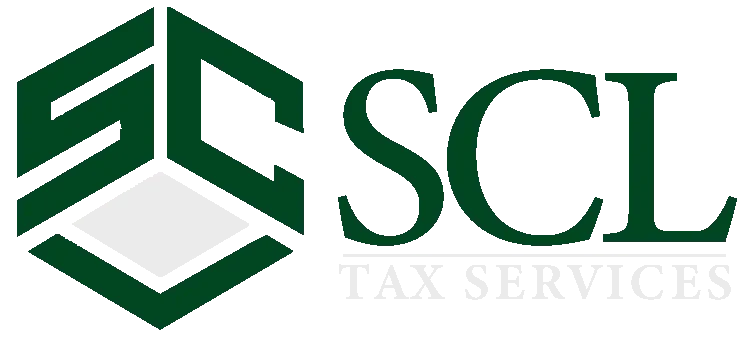Ever wonder if your child’s investment income could trigger a surprise tax bill? If they receive dividends, interest, or capital gains, IRS Form 8615 may come into play. But there’s no need to worry SCL Tax Services is here to guide you through the process. Our experienced tax professionals help you understand “kiddie tax,” outlining who needs to file Form 8615, how the tax is calculated, and what you can do to reduce any potential burden. Stay with our tax accounting team until the end of this article!
Understanding IRS Form 8615

IRS Form 8615 is designed to calculate the tax on a child’s unearned income when that income goes over a certain threshold. The IRS introduced this rule to prevent parents from reducing their own tax burden by shifting investment income to their children. When a child’s unearned income surpasses a specified limit, any amount above that is taxed at the parent’s (usually higher) tax rate instead of the child’s rate.
What Counts as Unearned Income?
Unearned income generally comes from investments or other non-work-related sources, including:
- Interest and dividends
- Capital gains (from selling stocks, bonds, or real estate)
- Taxable scholarships and grants
- Trust distributions
- Rental income
- Royalties
Keep in mind that earned income like wages, self-employment, or small business profits doesn’t factor into Form 8615. The form applies strictly to unearned income.
Who Needs to File IRS Form 8615?

Your child must file Form 8615 if all of the following criteria are met:
Age Requirement
They were under 18 at the end of the tax year, or
They were full-time students aged 18–23 and provided less than half of their own financial support.
Unearned Income Threshold
Unearned income exceeded the IRS limit for the tax year (this amount can vary each year).
Filing Requirement
They are required to file their own tax return for that year.
Living Parent
At least one parent was alive at the end of the tax year.
No Joint Return
The child isn’t filing a joint tax return with a spouse.
If your child meets all these conditions, Form 8615 usually applies. The IRS established this to ensure unearned income over the threshold is taxed at the parent’s tax rate, not the child’s often lower rate.
How Is the Tax Calculated?
Total Unearned Income
It begins by adding up all of your child’s unearned income for the year (e.g., interest, dividends, and capital gains).
Subtract the Dependent Standard Deduction
A dependent’s standard deduction is generally set each tax year and can change. Check the current IRS guidelines for the exact amount.
Check the Threshold
If your child’s unearned income exceeds the limit determined by the IRS (after subtracting the standard deduction), you’ll typically need to file Form 8615. This threshold may vary from year to year.
Apply the Parent’s Tax Rate
Any unearned income above the IRS threshold is taxed at the parent’s highest marginal tax rate. This can lead to a higher tax bill than if it were taxed at the child’s rate.
Because the child’s excess unearned income is taxed at the parent’s rate, proactive tax planning can help you manage or reduce this potential expense especially if your child is expected to have significant investment or trust distributions in their name. Always consult the latest IRS publications or a qualified tax professional for the most accurate, up-to-date information.
How to File IRS Form 8615?

Submitting IRS Form 8615 is relatively straightforward:
Complete Your Child’s Form 1040 Begin with your child’s standard tax return on Form 1040.
Fill Out Form 8615 Use this form to calculate the kiddie tax on your child’s unearned income.
Transfer the Tax Amount Take the tax figure from Form 8615 and enter it on Schedule 2 of Form 1040.
File Both Forms Together Send Form 8615 along with Form 1040 to the IRS in the same tax return package.
In some cases, you’ll need to provide details about your own taxable income or tax rate so your child’s return can be accurately completed.
Strategies to Reduce the Tax Impact!
Here are some ways to lessen or avoid the tax burden associated with Form 8615:
Use Tax-Free Accounts Consider a 529 college savings plan or a Roth IRA for your child. Earnings in these accounts can grow tax-free, helping reduce or eliminate kiddie tax issues.
Consider Custodial Accounts Setting up a UGMA (Uniform Gifts to Minors Act) or UTMA (Uniform Transfers to Minors Act) account allows you to gift assets to your child. However, if the income from these accounts exceeds the filing threshold, Form 8615 still applies.
Stay Below the Threshold Keep an eye on your child’s unearned income like interest, dividends, and other investments. Aim to keep it below the threshold.
Handle Your Tax Forms with SCL Tax Services!
Dealing with tax rules for your child’s unearned income can feel overwhelming, especially if you have multiple returns or income sources to manage. Professionals at our tax services in and near the Bronx know that tax season can be challenging, and we’re here to help. Serving the Bronx area and beyond, we offer comprehensive services like Bronx tax services, tax accounting, expert business tax guidance, and bookkeeping services. Our dedicated tax accountant team makes the process simple from gathering your documents to accurately completing your forms so you can make smart financial decisions without the extra stress. Whether you need help with IRS Form 8615, bookkeeping, or specialized tax preparation for your small business, we’re ready to assist. Contact SCL Tax Services today, and let us guide you every step of the way while uncovering potential tax-saving opportunities.
FAQs
IRS Form 8615 is used to calculate the tax on a child’s unearned income when it exceeds a certain limit set by the IRS. This form ensures that the unearned income above the threshold is taxed at the parent’s tax rate rather than the child’s typically lower rate.
Unearned income includes:
Interest and dividends, Capital gains (profits from selling stocks, bonds, or real estate), Taxable scholarships and grants, Trust distributions, Rental income, Royalties
Failing to file Form 8615 when needed can lead to penalties, interest on unpaid taxes, and potential issues with the IRS. It’s crucial to meet all filing requirements to avoid these complications.
